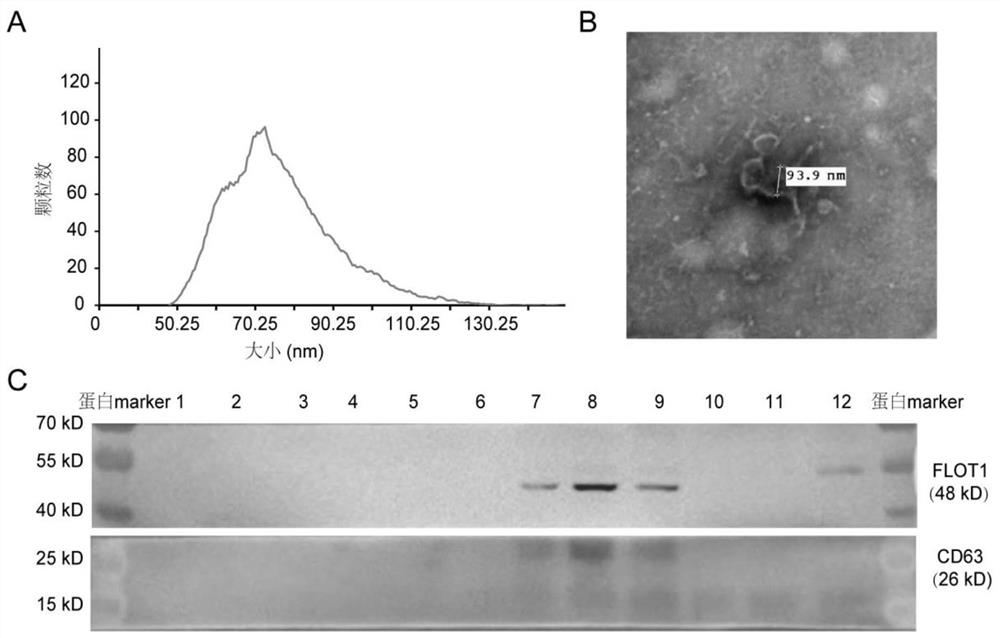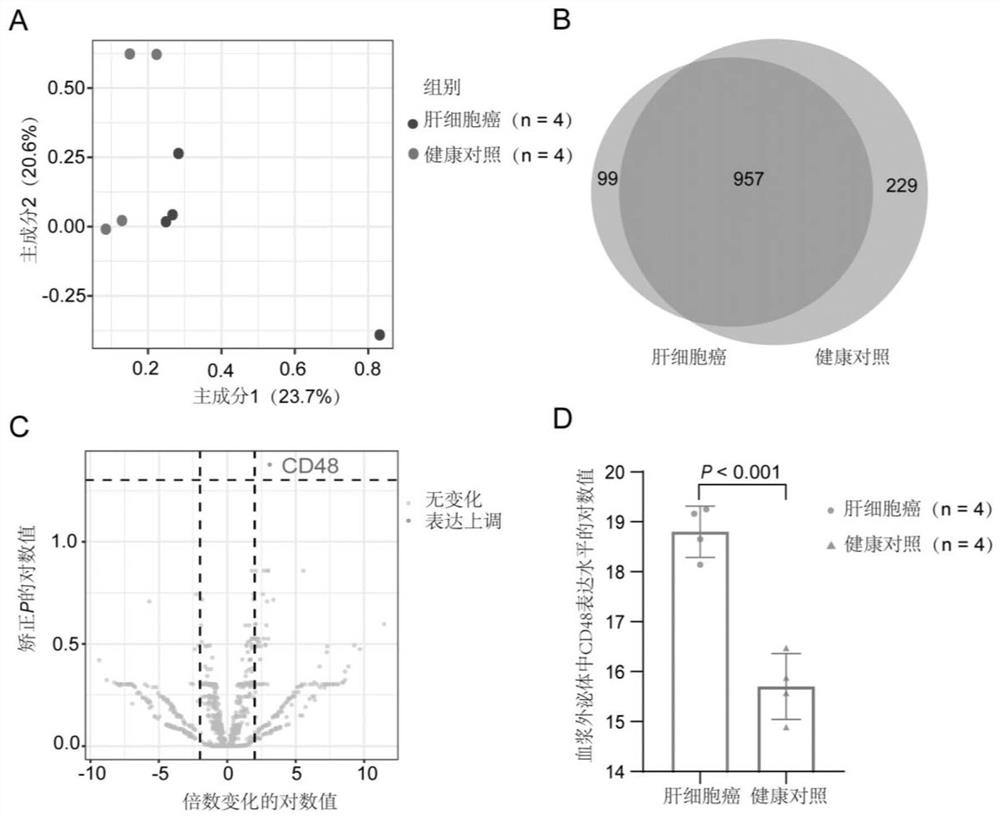Biomarker, kit and detection method for liver cancer diagnosis
A technology of biomarkers and kits, applied in the field of molecular markers, can solve the problems of hepatocellular carcinoma plasma, etc., achieve high specificity, strong sensitivity, and improve the diagnostic rate
- Summary
- Abstract
- Description
- Claims
- Application Information
AI Technical Summary
Problems solved by technology
Method used
Image
Examples
Embodiment 1
[0091] Example 1, Extraction and Identification of Plasma Exosomes
[0092] Four plasma samples from hepatocellular carcinoma (HCC) patients and 4 healthy people (HC) were selected, matched according to age and sex, and plasma exosomes were isolated, and evaluated by nanoparticle size analysis, transmission electron microscope analysis, and Western blot analysis. Quality of extracted exosomes. The results of nanoparticle tracking analysis showed that the diameter of the enriched exosomes was about 30-150 nm, the peak particle size was about 72.25 nm, and the concentration was about 2.19 × 10 9 particles / mL ( figure 1 Middle A), similar in size to exosomes reported in the literature. Through transmission electron microscope analysis, it can be clearly observed that the size of plasma exosomes is between 40 and 150 nm ( figure 1 Middle B), the shape is like "saucer-shaped" or "oval", which is consistent with the morphology of exosomes. Western blot analysis showed that the ...
Embodiment 2
[0093] Example 2. Proteomic analysis of plasma exosomes
[0094] The proteomics map of liver cancer plasma exosomes was drawn, and the high-throughput mass spectrometry detection of the whole proteome was carried out by using the shotgun strategy and the data-independent acquisition (Data-independent acquisition, DIA) data acquisition method.
[0095] The present invention undergoes quality control filtering, data normalization and protein qualitative and quantitative analysis ( figure 2 Middle A), a total of 1434 proteins were identified. Among them, 20 proteins are known characteristic markers on the surface of exosomes, and their expression abundance ranks among the top among all identified proteins ( figure 2 Middle B). 1226 and 1346 proteins were identified in the HCC and HC groups, respectively ( figure 2 Middle C), there are 1138 shared proteins between the two groups.
[0096] The identified 1434 proteins were compared with exosome databases ExoCarta and Vesicle...
Embodiment 3
[0097] Example 3. Identification of candidate protein markers associated with liver cancer in plasma exosomes
[0098] The inventors performed principal component analysis (Principle component analysis, PCA). The results showed that the plasma exosomal proteome could significantly separate the HCC group from the HC group ( image 3 Middle A), suggesting that plasma exosomes undergo significant changes when liver cancer occurs.
[0099] In order to ensure the reliability of the analysis results, the inventors only retained the proteins detected in at least two samples, and used the KNN (K-nearest neighbor, k-Nearest Neighbor) method to fill in missing values. Finally, 1056 and 1186 proteins were retained in the HCC group and HC group, respectively, for subsequent analysis ( image 3 Middle B). Further, the inventors found that CD48 was the protein with the most significant difference between the HCC group and the HC group through protein differential expression analysis ( P...
PUM
| Property | Measurement | Unit |
|---|---|---|
| diameter | aaaaa | aaaaa |
| diameter | aaaaa | aaaaa |
| Sensitivity | aaaaa | aaaaa |
Abstract
Description
Claims
Application Information
 Login to View More
Login to View More - R&D
- Intellectual Property
- Life Sciences
- Materials
- Tech Scout
- Unparalleled Data Quality
- Higher Quality Content
- 60% Fewer Hallucinations
Browse by: Latest US Patents, China's latest patents, Technical Efficacy Thesaurus, Application Domain, Technology Topic, Popular Technical Reports.
© 2025 PatSnap. All rights reserved.Legal|Privacy policy|Modern Slavery Act Transparency Statement|Sitemap|About US| Contact US: help@patsnap.com



